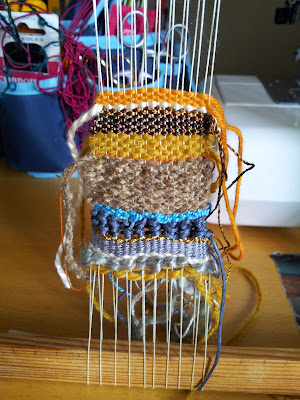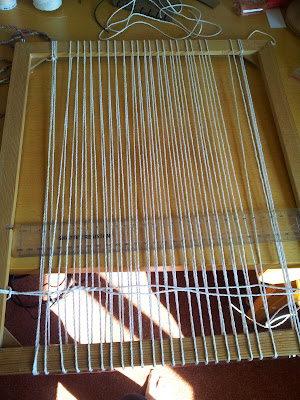The river is the River Weaver that is 5 minutes from my home and where I walk daily and find much inspiration from such as trees, reflections, wildlife, old boats and much more. I think this is a theme that I will get a lot of inspiration from and will keep me enthused about it as I can combine it with the embroidery.
I have begun by taking photographs when I walk by the river. There is an old tug boat (I think it is a tug boat). This boat has always fascinated me and I love to look at it every time we visit the river. It has a very rusting painted surfaces. The peeling paint and rust attract me and I think of the layering work that like to do. I am having a full day drawing and painting hopefully trying to reflect the peeling surfaces of the boat. I am planning visiting the boatyard to see if I can get permission to have a closer look at the boat and take some photographs and do some drawing. The view I get of it at the moment is from the opposite bank and I can't wait to give it closer inspection. I do hope I am able to.
More layers at the river. Peeling bark on silver birch trees.
I am planning to visit Platt Hall Gallery of Costume and Hardwick Hall within the next few weeks. I am hoping that seeing the textiles and the embroidery there will help towards working in my theme book. I am working from books and the web but really want to see some 16th century embroidery as up close as I can.
Platt Hall Gallery of Costume has one of the largest designated collections of clothing and fashion accessories in Britain.
Hardwick Hall was the home of Bess of Hardwick who was part of Elizabethan English society. She was an accomplished needlewoman. Her collection of textiles known as the Hardwick Hall Textiles is the largest collection of textiles, embroideries and tapestries to have been preserved by a single private family. Bess Hardwick's husband was sometime keeper to the captive Mary Queen of Scots and Bess would at times join Mary Queen of Scots at Chatsworth House. During this time they worked on the Oxburgh Hangings. I have been lucky enough to purchase a secondhand copy of the book An Elizabethan Inheritance The Hardwick Hall Textiles by Santina M. Levey.

Anon, (2015). [image] Available at: https://blogger.googleusercontent.com/img/b/R29vZ2xl/AVvXsEiMDXASyiPCkmDdrM-jwEPx_UlxMKbXqYhVDab-0VF4qqwTEXKZgcVwqKXFRZUiNqpetOqlWujyWDgiTfCRCd0X2xXhFn02y6QUqIbPwYayXJX_G3EGnm27gR7Cjg2EPCHgFf_kHeFdQ1M/s1600/marian+hanging+4.jpg [Accessed 14 May 2015].






























